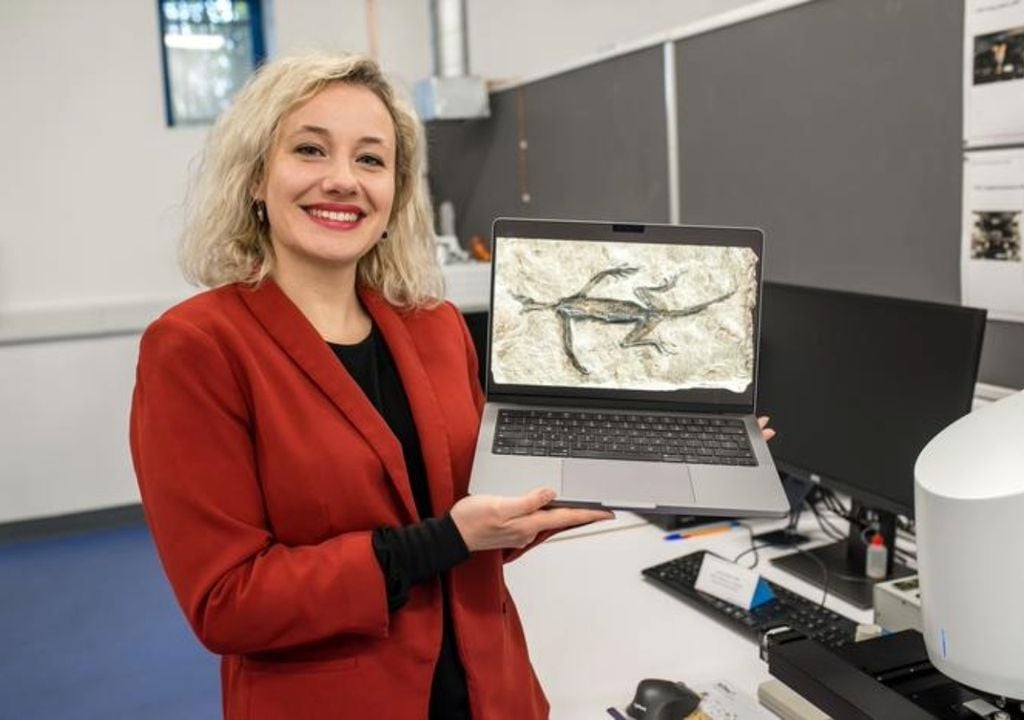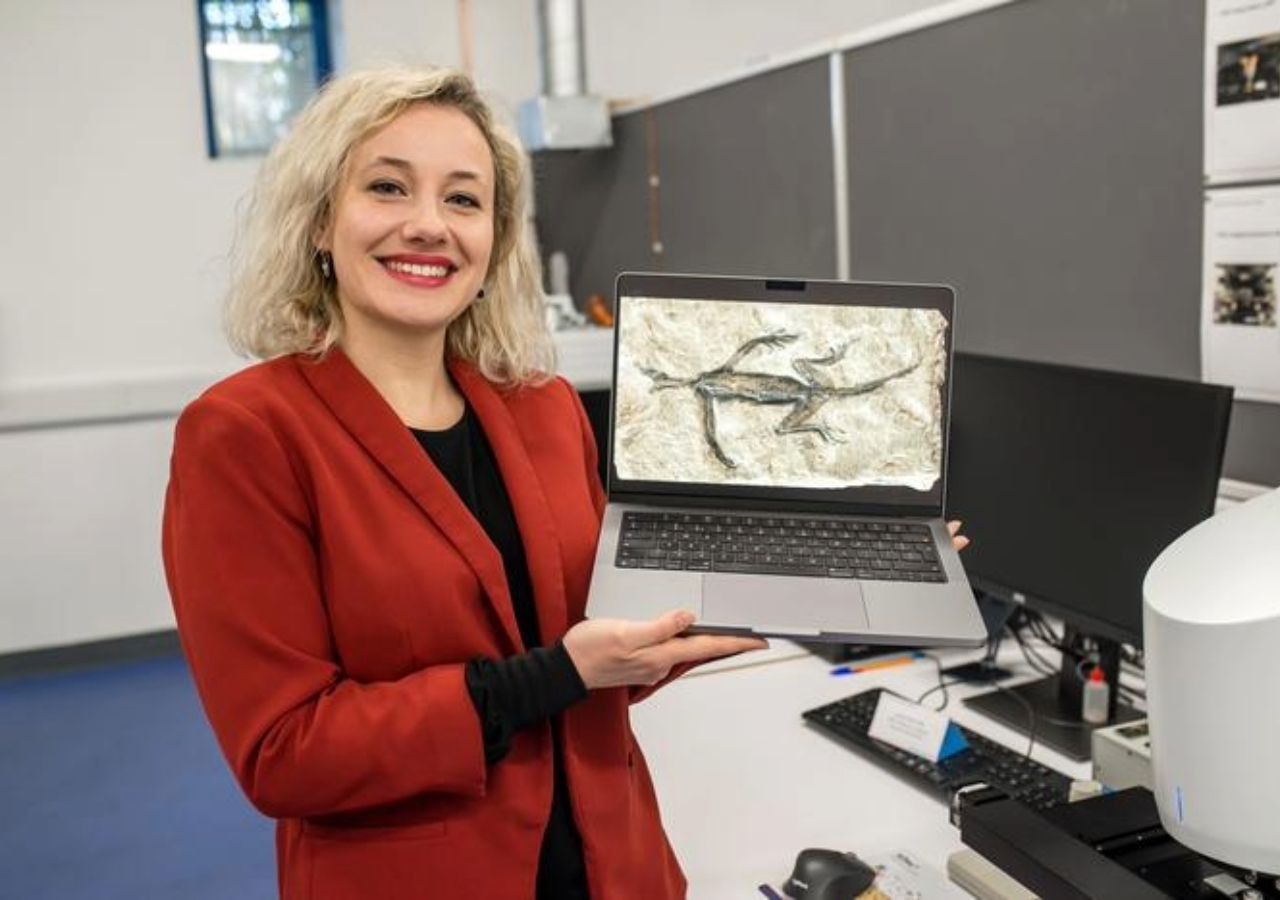a It is 280 million years old An alpine reptile fossil showing preservation of soft tissue is believed to be partly a historical forgery. Analysis of the remains of Tridentinosaurus antiquus showed that the fossil is largely presentJust black paint on a rock surface that looks like a lizard he. The team behind the trade magazine Paleontology The published study urges caution when using the fossil in future research.
Invalid classification
Found in the Italian Alps in 1931 Tridentinosaurus anticus The fossil is an important specimen of Understanding early reptile development; It was famous for its remarkable preservation: the shape of its body stood out darkly against the rocks surrounding it.
“Fossil soft tissues are rare“But when they are found in a fossil, they can reveal important biological information, such as external colouration, internal anatomy and physiology,” says Dr Valentina Rossi from University College Cork in Ireland, who led the research.
The reptile from the Early Permian Regnana Formation in the Italian Alps was initially classified as a member of the reptile group Protorosauria, but the fossil had not yet been studied in detail, so experts were not sure which reptile group this strange lizard belonged to, and more generally about their geological history.
doctor. Valentina Rossi, researcher at University College Cork.
Professor Evelyn Kostacher, co-author, adds: “The strange preservation of Tridentinosaurus has puzzled experts for decades. Now it all makes sense: What has been described as charred skin is just paint“.
It's not a coincidence
Microscopic analysis revealed this The texture and composition of the material did not match real fossilized soft tissue. Initial investigations using ultraviolet imaging revealed that the entire specimen had been treated with a coating material: varnish or varnish. This practice was not uncommon in the past, and sometimes still is necessary to obtain a fossil specimen To be preserved in exhibitions and museum exhibits.
The team hoped that the original soft tissue beneath the shell was still in good condition and that they could extract important ancient biological information. indeed Outline of a body Tridentinosaurus anticus It was created artificiallyPerhaps to improve the fossil's appearance, a move that had fooled previous researchers.

Despite the protective varnish The fossil is not entirely fake; The bones of the hind limbs, especially the femur, appear authentic, although they are in a poor state of preservation. The analysis showed this as wellThe presence of osteoderms (small bony scales like those found in crocodiles) on the animal's back.
This study shows how modern analytical paleontology and rigorous scientific methods can solve a nearly century-old paleontology mystery. However, researchers advise caution when using this sample in future studies.
Source note:
Rossi, V.; Bernardi, M. Fornasero, M.; et al.; Articulated soft tissues have been uncovered in the oldest fossil reptiles from the Early Permian of the Alps. Paleontology.

“Alcohol buff. Troublemaker. Introvert. Student. Social media lover. Web ninja. Bacon fan. Reader.”







More Stories
Business, politics and science unified – BärnerBär
What items should you eat frequently?
Space: Controversy over life on planet K2-18b